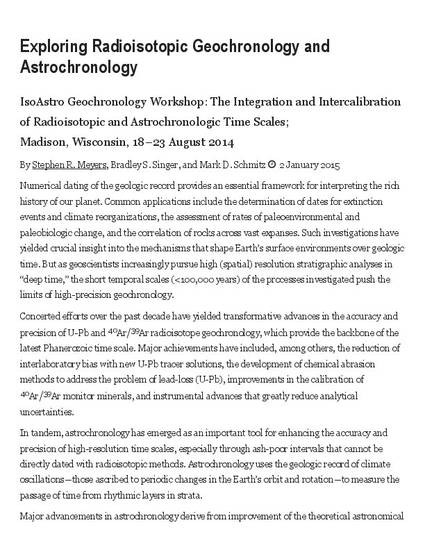
Numerical dating of the geologic record provides an essential framework for interpreting the rich history of our planet. Common applications include the determination of dates for extinction events and climate reorganizations, the assessment of rates of paleoenvironmental and paleobiologic change, and the correlation of rocks across vast expanses. Such investigations have yielded crucial insight into the mechanisms that shape Earth's surface environments over geologic time. But as geologists increasingly pursue high (spatial) resolution stratigraphic analyses in "deep time," the short temporal scales (<100,000 years) of the processes investigated push the limits of high-precision geochronology.
This document was originally published in Eos by American Geophysical Union. Copyright restrictions may apply. doi: https://doi.org/10.1029/2015EO021437.
